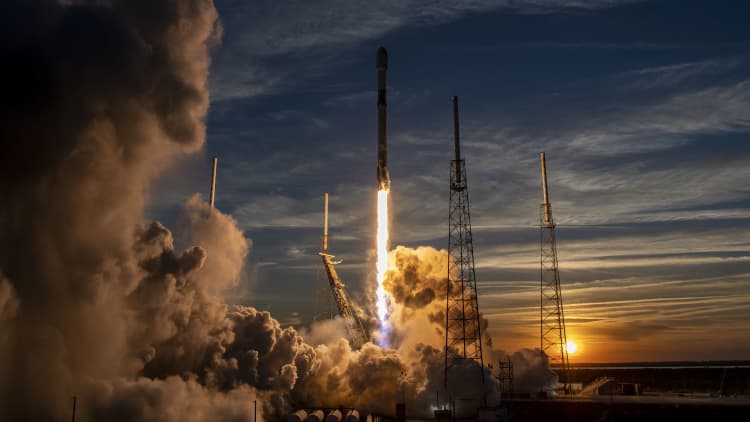
SpaceX’s next-generation Starship spacecraft atop its powerful Super Heavy rocket is launched from the company’s Boca Chica launchpad on an uncrewed test flight, near Brownsville, Texas, on Nov. 18, 2023.
Joe Skipper | Reuters
The Federal Aviation Administration on Monday announced the close of its investigation alongside SpaceX into the second Starship flight, as Elon Musk’s company seeks a license to launch the towering rocket again.
SpaceX led an investigation that the FAA oversaw into the Nov. 18 launch of a Starship prototype that reached space before being intentionally destroyed due to a problem with the rocket.
The FAA noted that SpaceX identified 17 corrective actions from the mishap.
“Prior to the next launch, SpaceX must implement all corrective actions and receive a license. … The FAA is evaluating SpaceX’s license modification request and expects SpaceX to submit additional required information before a final determination can be made,” the federal regulator said in a statement.
SpaceX, in a post on its website on Monday, identified some of the issues that cut the second Starship launch short.
The 33 engines of the “Super Heavy” booster worked as the rocket ascended. Shortly after the upper part of Starship separated from the booster, “several” of the engines “began shutting down.” Then, “one engine failed,” a process that was “quickly cascading” before the booster broke apart, the company said.
Starship itself flew for several more minutes after separating from the booster. But SpaceX said “a leak” in the rear of the spacecraft developed when a fuel vent led to “a combustion event and subsequent fires,” cutting the connection “between the spacecraft’s flight computers” and shutting down Starship’s six engines. The rocket’s flight termination system — a standard safety feature in rockets, as it destroys the vehicle if a problem arises or it flies off course — then triggered.
The company emphasized that it has already made “changes on upcoming Starship vehicles” to resolve the issues from the second test flight, with “upgrades” to the booster and Starship prototypes that are set to launch the third test flight.
The 17 corrective actions following the second Starship flight also represent a marked improvement from the first, which required 63 corrective actions before the rocket launched again.
Musk said in a social media discussion last week that he expects the company to be ready to launch the third Starship test flight as soon as mid-March, although the SpaceX CEO also said, shortly after the November launch, that the third flight’s rocket would be “ready to fly in three to four weeks.”
As the FAA noted, the next launch is pending regulatory approval of a license.

Don’t miss these stories from CNBC PRO:







